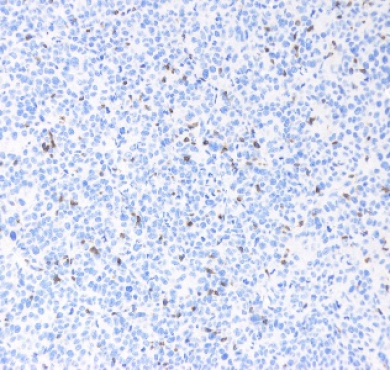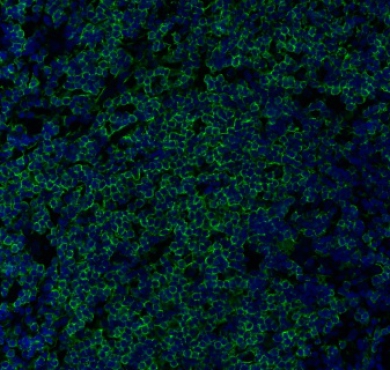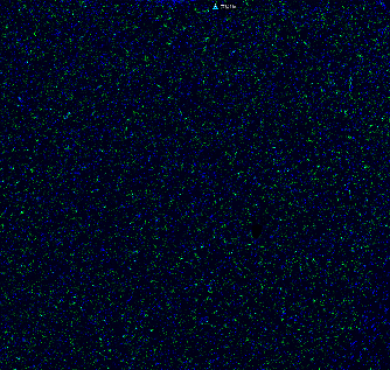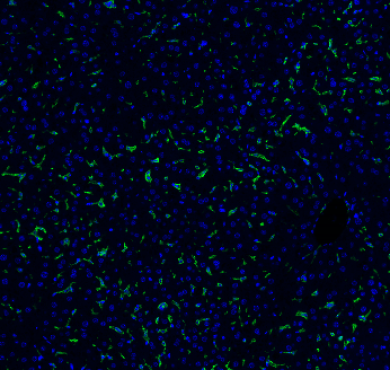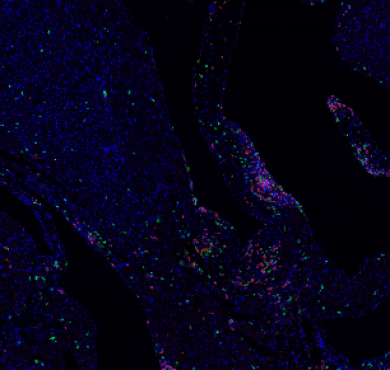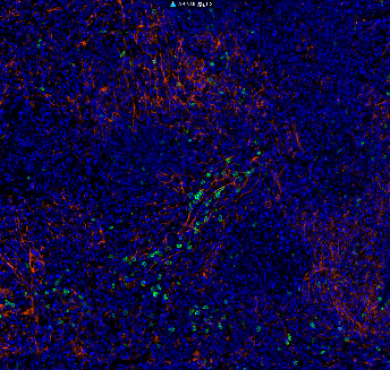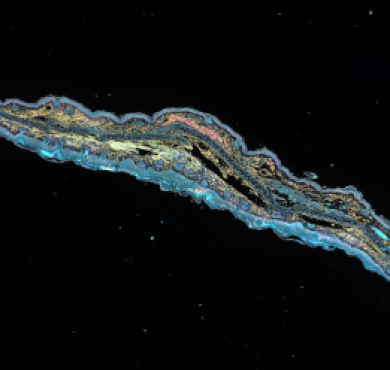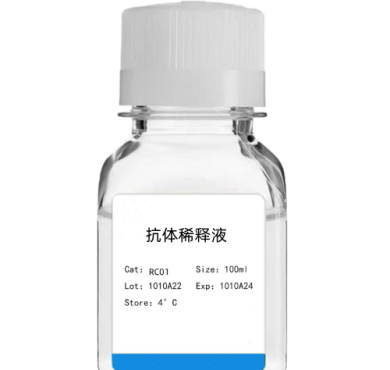Anti-Ki 67 antibody[STJ96966]
Product nameAnti-Ki 67 antibodyShort DescriptionMouse monoclonal against Ki 67DescriptionKi 67 is a protein encoded by the MK
| Product name | Anti-Ki 67 antibody[STJ96966] |
|---|---|
| Short Description | Mouse monoclonal against Ki 67 |
| Description | Ki 67 is a protein encoded by the MKI67 gene which is approximately 358,6 kDa. Ki 67 is localised to the nucleus. It is involved in DNA damage, neuroscience and primary focal segmental glomerulosclerosis. It is required to maintain individual mitotic chromosomes dispersed in the cytoplasm following nuclear envelope disassembly. It associates with the surface of the mitotic chromosome and covers a substantial fraction of the chromosome surface. Ki 67 is expressed in the intestine, liver, blood, lung and lymph nodes. Mutations in the MKI67 gene may result in brain ependymoma. STJ96966 was developed from clone 4A8 and was affinity-purified from mouse ascites by affinity-chromatography using specific immunogen. This primary antibody detects endogenous Ki 67 proteins. |
| Applications | IHC |
| Dilution range | IHC 1:200 |
| Specificity | The antibody detects endogenous Ki 67 proteins. |
| Protein Name | Proliferation marker protein Ki-67 Antigen identified by monoclonal antibody Ki-67 Antigen KI-67 Antigen Ki67 |
| Immunogen | Synthetic Peptide |
| Storage Instruction | Store at -20°C, and avoid repeat freeze-thaw cycles. |
| Note | For Research Use Only (RUO). |
| Validated Application |
| Host | Mouse |
|---|---|
| Clonality | Monoclonal |
| Clone ID | 4A8 |
| Reactivity | Human, Mouse, Rat |
| Conjugation | Unconjugated |
| Purification | The antibody was affinity-purified from mouse ascites by affinity-chromatography using specific immunogen. |
| Isotype | IgGMale |
| Formulation | Liquid in PBS containing 50% glycerol, 0.5% BSA and 0.02% sodium azide. |
| Gene ID | 4288 |
|---|---|
| Gene Symbol | MKI67 |
| Database Links | HGNC:7107 OMIM:176741 |
| Alternative Names | Proliferation marker protein Ki-67 Antigen identified by monoclonal antibody Ki-67 Antigen KI-67 Antigen Ki67 |
| Function | Required to maintain individual mitotic chromosomes dispersed in the cytoplasm following nuclear envelope disassembly . Associates with the surface of the mitotic chromosome, the perichromosomal layer, and covers a substantial fraction of the chromosome surface . Prevents chromosomes from collapsing into a single chromatin mass by forming a steric and electrostatic charge barrier: the protein has a high net electrical charge and acts as a surfactant, dispersing chromosomes and enabling independent chromosome motility . Binds DNA, with a preference for supercoiled DNA and AT-rich DNA . Does not contribute to the internal structure of mitotic chromosomes . May play a role in chromatin organization . It is however unclear whether it plays a direct role in chromatin organization or whether it is an indirect consequence of its function in maintaining mitotic chromosomes dispersed (Probable). |
| Post-translational Modifications | Phosphorylated. Hyperphosphorylated in mitosis . Hyperphosphorylated form does not bind DNA. |
| Cellular Localization | Chromosome Nucleus Nucleus, nucleolus. Associates with the surface of the mitotic chromosome, the perichromosomal layer, and covers a substantial fraction of the mitotic chromosome surface . Associates with satellite DNA in G1 phase . Binds tightly to chromatin in interphase, chromatin-binding decreases in mitosis when it associates with the surface of the condensed chromosomes . Predominantly localized in the G1 phase in the perinucleolar region, in the later phases it is also detected throughout the nuclear interior, being predominantly localized in the nuclear matrix . |
| Swiss-Prot Key | P46013_HUMAN |
 Anti-Ki 67 antibody[STJ96966](图3)](/uploads/ueditor/20200916/1-200916142T0P6.png)
